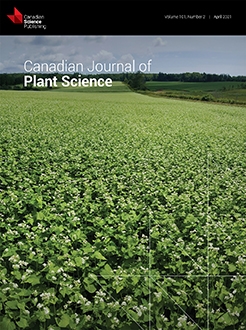Sole-source light-emitting diodes (LEDs) are alternatives to fluorescent tubes and high intensity discharge lamps that are routinely used for indoor cultivation of horticultural commodities, including microgreens. This study examined the effect of photosynthetic photon flux density (PPFD) from LEDs on phytochemical profiles of organically grown kale, cabbage, arugula, and mustard microgreens, and their association with growth and morphological attributes. LEDs were used to deliver a 15% blue light and 85% red light mixture to microgreens at varying PPFDs between 100 and 600 μmol·m−2·s−1. For all microgreens, increased concentrations of ascorbate (total and reduced) and total anthocyanin were proportional to PPFD. Total phenolic concentrations were elevated in all four microgreens at high PPFDs, whereas chlorophyll concentrations declined in arugula, cabbage, and mustard. A principal component analysis revealed anthocyanins and phenolics were associated with ascorbate levels in all microgreens, but not with chlorophylls or carotenoids. At high PPFDs photosynthetic pigment levels were negatively associated with fresh and dry weight to varying degrees. Anthocyanins, phenolics, and ascorbate were negatively correlated with hypocotyl length and the colour attribute hue angle in all microgreens. These results indicate that microgreen growth and morphology are associated with altered phytochemical profiles during cultivation under sole-source LEDs.
BioOne.org will be down briefly for maintenance on 17 December 2024 between 18:00-22:00 Pacific Time US. We apologize for any inconvenience.
How to translate text using browser tools
21 September 2020
The growth and morphology of microgreens is associated with modified ascorbate and anthocyanin profiles in response to the intensity of sole-source light-emitting diodes
Chase Jones-Baumgardt,
Qinglu Ying,
Youbin Zheng,
Gale G. Bozzo
ACCESS THE FULL ARTICLE
It is not available for individual sale.
This article is only available to subscribers.
It is not available for individual sale.
It is not available for individual sale.
anthocyanin
ascorbate
Brassicaceae
light-emitting diodes
microgreens
phenolics





